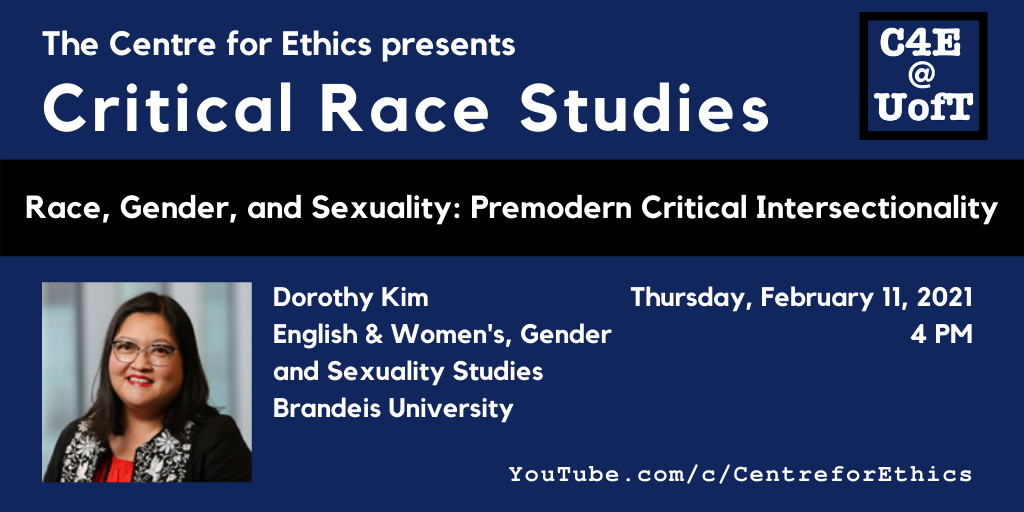
Race, Gender, and Sexuality: Premodern Critical Intersectionality
Sumi Cho, Kimberlé Crenshaw, and Leslie McCall, in their 2013 article “Toward a Field of Intersectionality Studies: Theory, Applications, and Praxis” (Cho et al. 2013) define the tripartite structure of Intersectionality Studies as “first consisting of applications of an intersectional framework or investigation of intersectional dynamics, the second consisting of discursive debates about the scope and content of intersectionality as a theoretical and methodological paradigm, and the third consisting of political interventions employing an intersectional lens” (Cho et al. 2013: 785). The first intersectional “engagement” really considers how a multi-axis, intersectional frame can help rethink specific, contextual “research and teaching projects” (Cho et al. 2013: 785). The second intersectional “engagement” addresses “theory and methodology,” and asks “whether there is an essential subject of intersectionality and, if so, whether the subject is statically situated in terms of identity, geography, or temporality or is dynamically constituted within institutions and structures that are neither temporally nor spatially circumscribed” (Cho et al. 2013: 785). This area is especially central to discussions in premodern fields because of the dynamic flux in constituting identities in different geographies and the transhistorical discussion that any work on premodern critical intersectionality must undertake. Finally, the third area addresses how intersectionality requires not just theory and methodology, but also praxis particularly in relation to politics, activism, and resistance. This talk resituates this work and then examines it in relation to the premodern archive. We demonstrate how premodern critical intersectionality should address all three areas discussed in Cho, Crenshaw, and McCall’s piece through two different medieval European case studies: St. Mary of Egypt in the Byzantine Empire and the legal documentation of Jewish women in court cases in medieval England. Of course, intersectionality is also always under construction, especially since the various identity categories we are discussing are always in flux in the premodern past. Thus, premodern critical intersectionality will also be dependent on local conditions, geographies, time periods, and group dynamics.
► please register here
This is an online event. It will be live streamed on the Centre for Ethics YouTube Channel on Thursday, February 11. Channel subscribers will receive a notification at the start of the live stream. (For other events in the series, and to subscribe, visit YouTube.com/c/CentreforEthics.)
Dorothy Kim
English & Women’s, Gender and Sexuality Studies
Brandeis University
Thu, Feb 11, 2021
04:00 PM - 05:30 PM
Centre for Ethics, University of Toronto
200 Larkin
